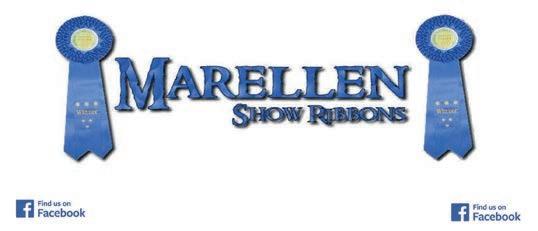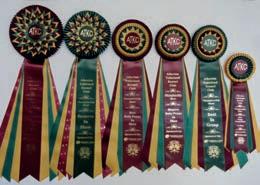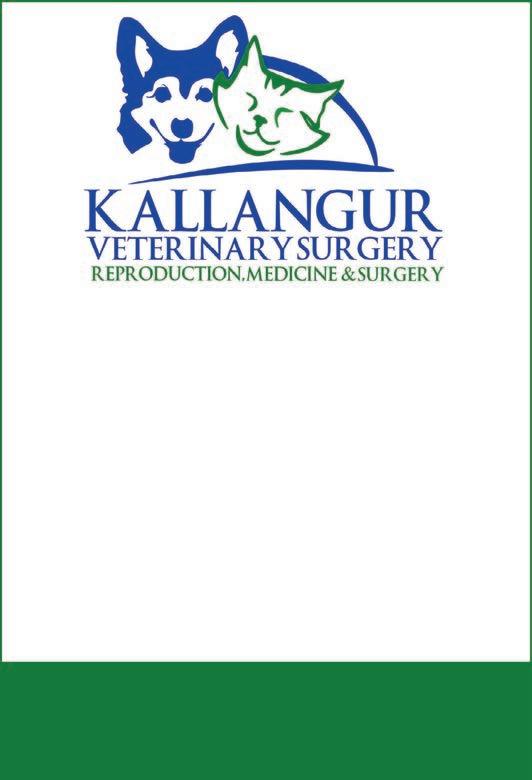
9 minute read
Separation Anxiety
– Craig A Murray
Whilst it is a very desirable feeling for some of us to know that our dogs can’t live without us, it’s not a healthy state of mind for our dogs to be so dependent upon us that they go into stress the moment we walk out of sight.
When we look at how we raise our children, we teach them to be their independent best but we teach our dogs to be so very dependent on us and in some ways, that fulfils our emotional needs. There’s no denying how much most pet owners love their dogs, but when you look at things in a common sense and practical way, to have an animal under enormous stress when you leave it should be considered a form of abuse.
It’s true that not all dogs are the same and so there are some individuals that are needier than others. We also must take into consideration the amount of time we spend with our dogs. We want to ensure our dogs have great environmental enrichment and quality of life, but we also want to ensure that they can cope on their own and are comfortable in their own skin. Due to the number of dogs we own and the amount of times we must travel for work, we need to drop our dogs to boarding kennels at times. It’s great to see that when we leave our dogs, they are happy to go with whoever is holding the lead to take them to their accommodation. There is always that little twinge when we have to leave our dogs as we would much prefer to have them with us and in our care, but it’s nice to know they are well adjusted and settled dogs that won’t suffer too much due to our change of circumstance. Naturally a change of environment is always going to have some element of stress but we want to keep it to a minimum. It shows we are trying to do best practice for our dog’s emotional needs.
We see the oncoming of separation anxiety well before it happens in a lot of our client’s dogs. They will mention the dog starting to display anxious tendencies when they are preparing to leave for work or to go out without the dog. If we can identify an upcoming problem at this stage, the owner’s behaviour can be easily adjusted to make the dog more comfortable with knowing the owner is leaving. It’s always best to give your dog time
away from you when you are home for different periods of time to monitor their level of anxiety. Best to do things slowly and in small increments of time at first. You can make this process easier by placing an old towel or item of your clothing with your odour on it into the area with you dog. Once this practice has been replicated a few times you will notice the dog is not so anxious about its separation from you and in fact not triggering to things in the environment that could have previously caused an element of stress (as they had become part of the leaving ritual). Once you know the dog is comfortable away from you when you are home, start small amounts of time out of the house and away from the dog. Don’t make a big deal of leaving by significantly having a ritual with the dog before walking out the door – just gather your belongings and leave, showing the dog it’s no big deal. By you showing confidence and relaxation with this process, it will transfer across to your dog. All too often the owner’s guilt at having to leave the dog will make the transition to leaving even more difficult for both parties. If you have a dog with a well-established, long term separation anxiety issue, give the dog very short amounts of time away from you at the start until you can increase the amount of time and know the dog can handle the separation. If this small start to change the dog’s behaviour increases the stress for the dog to the point that it may injure itself or do damage to the environment, then that would be an indicator that you really do need veterinary intervention with a closely monitored drug program put into place. This would allow the dog to then undergo training with a clear and more stable mind to be able to handle the changes to its situation, the relationship with the owner and of course changes in the environment. Always be directed by your veterinarian as to which drug is best for your individual situation, and of course ask the relevant questions as to how long the dog will need to be on the medication and the dosage rates.
Also, it is best to work with a trainer that has experience dealing with more in-depth behaviour issues to ensure the dog’s welfare is a priority.
For further information contact –www.dogschool.com.au or phone 0400 741 660.
Est 1977





“ HOT FOIL STAMPING SPECIALIST ” PHONE: ( 02 ) 47741809
EMAIL: marellen@marellenshowribbons.com ADDRESS: 109 Silverdale Rd Silverdale N.S.W. 2752
WEB: www.marellenshowribbons.com “ FIND US ONFACEBOOKFORFAST COMMUNICATION ”
• Transcervical insemination with fresh, chilled and frozen semen. • Semen collection and freezing. • In-house progesterone testing - results in 20 minutes. • Dog and bitch fertility assessment and much more.






Dr Scott Norman BVSc PhD DACT Registered specialist - veterinary reproduction
Dr Jennifer Larsen BVBiol BVSc Ph (07) 3204 4332
1474 Anzac Ave Kallangur 4503
Joanne Bibby – Fursafe®
Definition
A dog unable to breathe due to an airway blockage or obstruction.
Cause
A foreign object gets stuck in a dog’s throat or has an object wrapped around the neck of a dog.
Safety precautions
As dog owners, we must learn what hazards exist, and then isolate the dog from those hazards. This can be achieved by not leaving the hazard around, don’t allow our dogs to continue chewing something hazardous and teaching them to ‘leave it’ or ‘drop it’.
Choking Hazards
A woman, while out on a walk ages ago, asked me if my Silky chewed tea towels, bedding and shoes like her Silky did. I responded smugly that ‘Oh no, my Silky doesn’t do anything like that!!’ Then out of the blue Izzy began chewing plastic! From cellophane to plastic bags to ice cream containers and storage containers – all things which could have ended in disaster. That smug look on my face was wiped off, that’s for sure!
The fact is that all dogs are at risk of choking.
Choking

Why? Because they use their mouths to learn, investigate, play with and decide if the tempting item tastes good.
Hazards to be aware of, but not limited to:
Dog treats which can break into large pieces Dogs eating too fast on large pieces of food Feeding small dog’s large pieces of food Plastic, rubber, fabric Bones which can break and splinter or where the ball joint breaks off a lamb leg etc Tennis balls which can compress in the dog’s mouth and become stuck Small tennis balls designed for small dogs becoming lodged in a larger dog’s throat Children’s toys which have small parts Batteries Clothing like socks, underwear, bikinis The squeaky thing in the squeaky toy Long leash, fishing wire or rope wrapped around dog’s neck
Signs and Symptoms
• Dog appears agitated or distressed, pacing
back and forth Pawing at the mouth Has difficulty breathing or begins gasping for breath Legs splayed with head down as though dog is trying to draw breath Gums, lips, tongue turns blue or grey Neck stretched out, if sitting Drooling uncontrollably Collapse Experiences respiratory failure Cardiac arrest
Action
1. Undertake Primary Assessment DRSABC
a.
b.
c.
d. Check for dangers – a danger may be that the dog has become aggressive (warning: never put a muzzle on a dog who has breathing difficulties).
Is your dog responding to your voice or your touch? If not, your dog may be unconscious.
Send for help – if there is someone else in the house get them to do things like get the first aid kit, help carry dog into house, prepare the car and call the Vet. They may also be able to help you restrain your dog.
Check the airway for vomit in the mouth, or foreign object and remove if there is.
2. Removing foreign object
a. Open dog’s mouth, pull tongue forward.
b. If the object is visible, use your forceps or
tweezers to remove the object. If it breaks into pieces, remove all if possible. You can try to remove an object using a finger sweep (move finger from one side of mouth to the other). Be careful not to push object deeper into throat.
If your dog is behaving aggressively do not use finger sweep method.
c. Check the breathing (respirations).
Feel/watch the rise and fall of the chest – start artificial respiration if not breathing
Do not pull on hooks (e.g. fish hooks) or pull on the tiny neck bones located in the back of a dog’s throat.
3. If you cannot reach the object or see it, administer the Heimlich Manoeuvre. a. Small Dog:
Lift dog upside down with hips/back legs. Put dog’s back against your stomach, head facing down, place your hands or closed fist on the dog’s belly just under the rib cage and push in the direction of your stomach sharply, 5 times to expel object. b. Large Dog:
Bend over behind dog and lift dog’s hips/ back legs. Wrap your arms around dog’s belly close to hips (push air out of lungs); thrust your arms/hands up and toward their lower rib cage, sharply 5 times to expel object. c. Stop and check airway after thrusts to see if the object has become dislodged and remove it if you can. Continue to repeat procedure and re-check until you arrive at the vet surgery. Do not continue the thrusting process if the object has been removed. d. Check the breathing (respirations) feel/ watch the rise and fall of the chest. Start artificial respiration if not breathing. e. Check circulation (pulse) – start CPR if no pulse. 4. If object is removed and your dog has stopped breathing, you will need to begin artificial respiration.
5. If heart stops, begin CPR. 6. Wrap in warm blanket. 7. Get to vet. If you have a driver:
• If your dog stops breathing, begin artificial respiration on the way to the vet surgery; if your dog’s heart stops beating, begin CPR on the way to the vet surgery. Reference: Canine Emergency First Aid Guide









